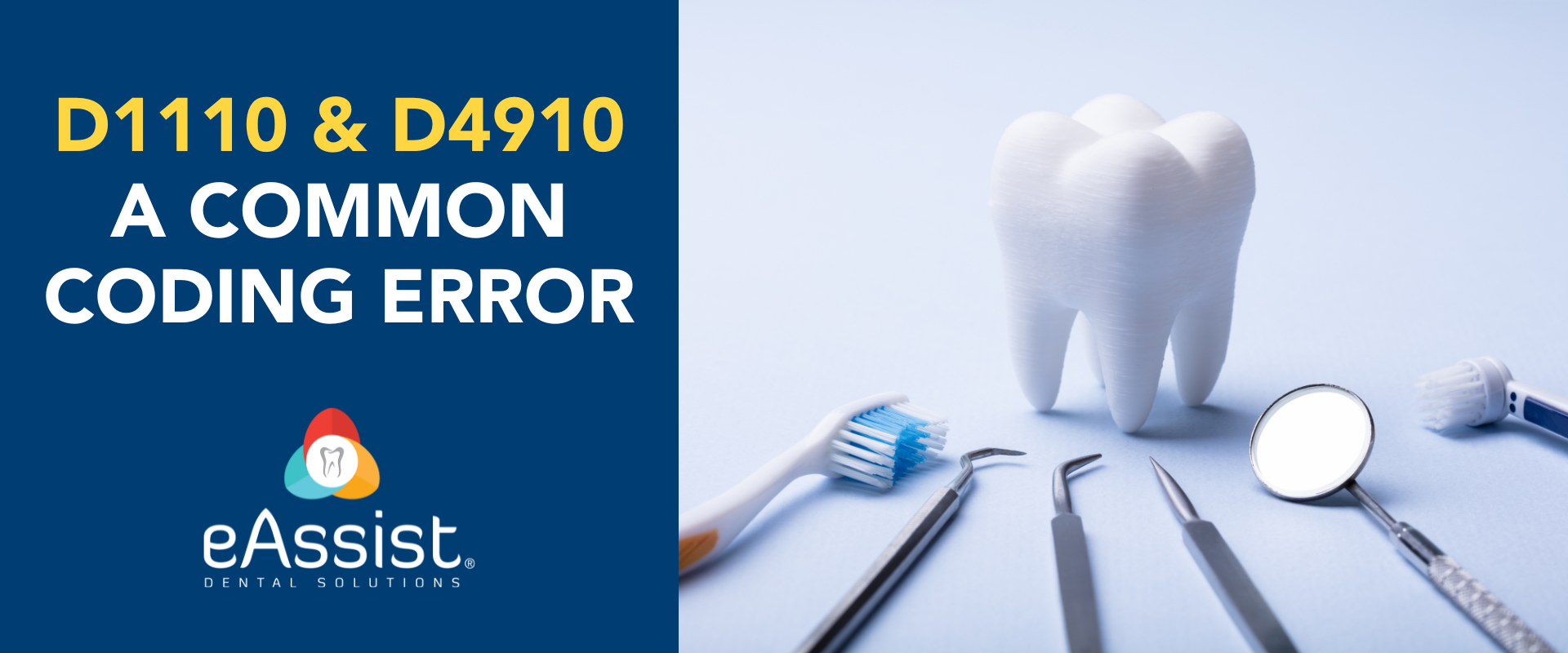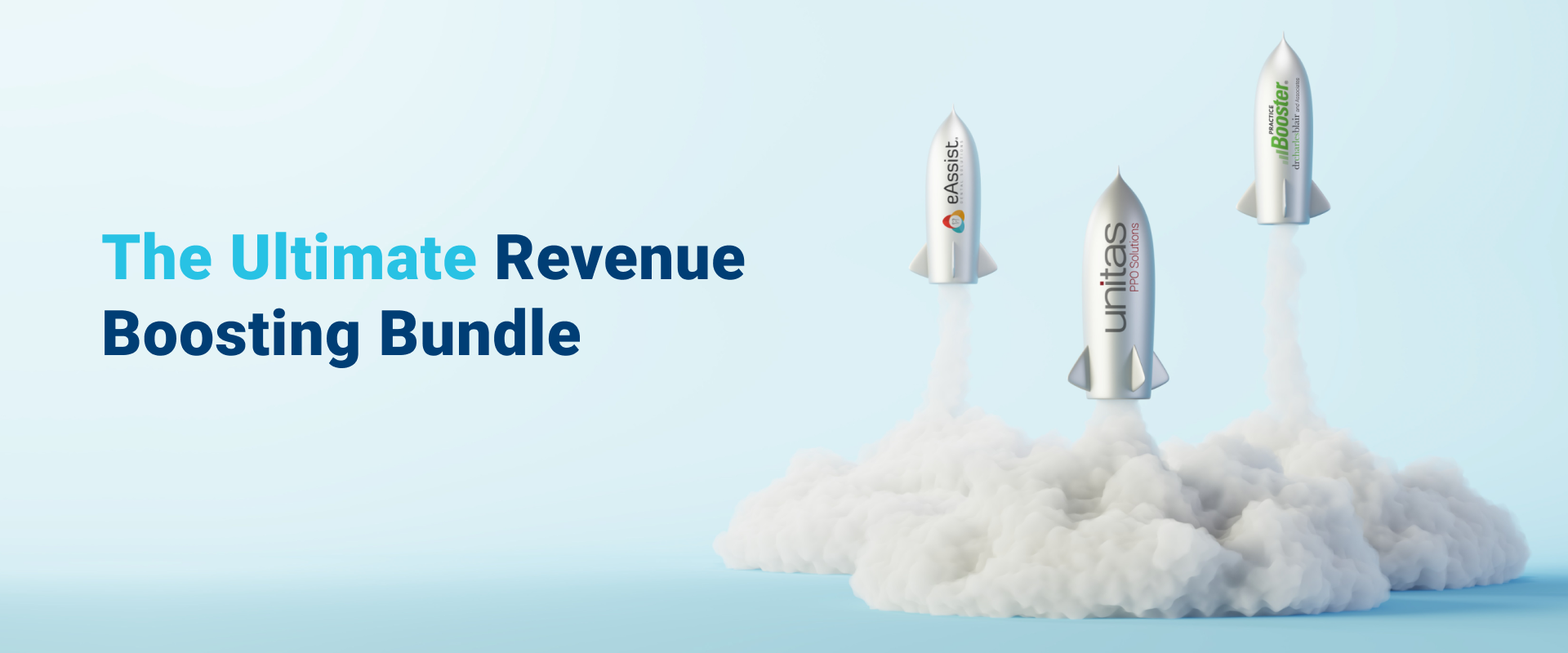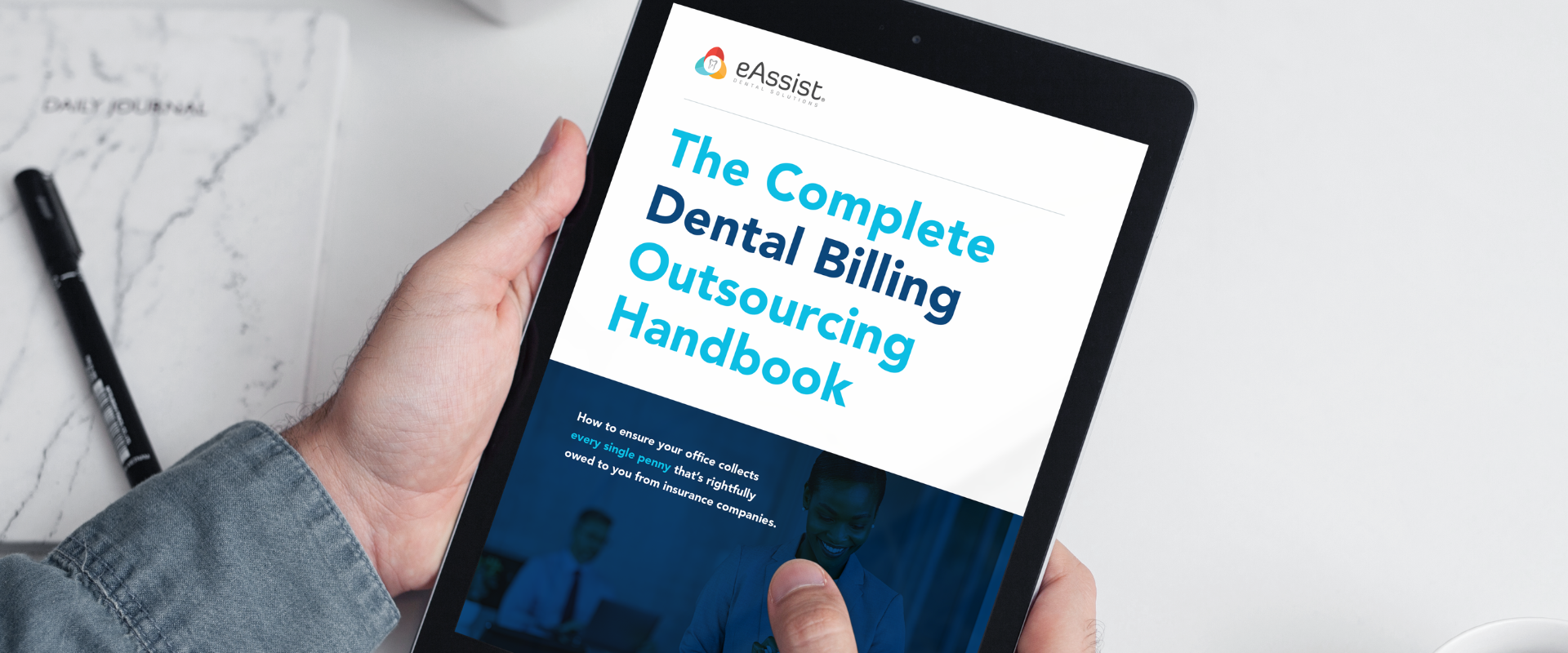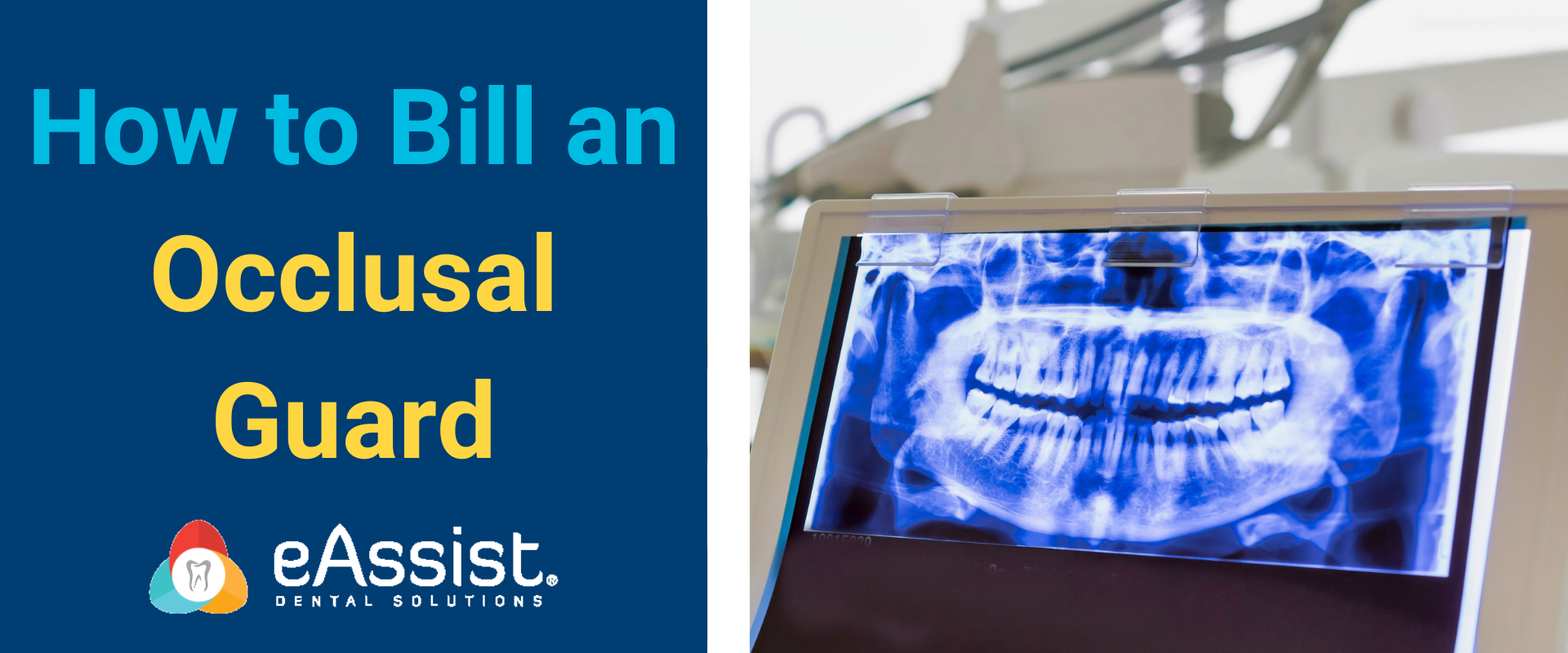There are over 800 current CDT codes, with 14 new ones coming in January 2024. That’s a lot to keep up with for any dental biller. It’s no surprise that a common reason for dental denials is incorrect coding. In this ongoing series, we will discuss common coding errors continuing with D1110 (adult prophylaxis) and D4910 (periodontal maintenance).
What is D1110?
According to the ADA, D1110 (adult prophylaxis) is “the removal of plaque, calculus, and stains from the tooth structures in the permanent and transitional dentition.” It’s a full mouth cleaning for patients with permanent teeth and healthy tissue.
What is D4910?
The ADA states periodontal maintenance is “performed following periodontal therapy and continues for the life of the dentition.” It’s a more in-depth cleaning than prophylaxis and is performed on those who have been previously treated for periodontal disease.
When do I bill D1110?
Bill D1110 when a full mouth cleaning is performed on an adult patient, or a patient with permanent teeth, who has healthy tissue.
When do I bill D4910?
Once a patient has had either scaling and root planing or osseous surgery, continual periodontal maintenance should be completed. This maintenance is more in-depth than a prophylaxis and should be billed as D4910.
What should I remember when billing D1110?
D1110 is used strictly for adults or those with permanent teeth. If you are billing prophylaxis for a child or a patient with primary teeth, you will use code D1120 (child prophylaxis). Although the ADA differentiates the two codes by primary vs permanent teeth, insurance companies have specific age limits for each. These age limits vary from carrier to carrier. Always follow the insurance plan’s age limit requirement when billing. It may seem counterintuitive but always choose insurance restrictions over CDT guidelines.
What should I remember when billing D4910?
D4910 can only be billed after the patient has had either scaling and root planing or osseous surgery. Most carriers require an 8-12 week waiting period before it can be performed. Although the ADA guidelines state that periodontal maintenance can continue through the life of the detention, some insurance companies limit how long it can be billed. When verifying insurance, check what restrictions are in the patient’s plan. Insurance restrictions always supersede the ADA guidelines.
Do D1110 and D4910 have frequency limits?
Both codes have frequency limits that are often shared. These limits change from insurance to insurance, but generally, prophylaxis is limited to twice per year. Periodontal maintenance is covered 2-4 times per year depending on the plan. Although the two codes share frequency, they are not interchangeable, and only one code should be billed per patient. If the patient has healthy tissue, bill D1110. If they had prior periodontal treatment, bill D4910.

Do I need any supporting documentation when billing D4910?
The only supporting documentation you need when billing D4910 is the patient’s perio history. The carrier may already have it on file, but it’s always best to include the dates of prior periodontal treatment in the comment section of the ADA claim form. This treatment includes any osseous surgery, scaling and root planing, or previous perio maintenance. Always include the treated quadrants when providing osseous surgery or scaling and root planing dates. You can also attach a perio chart, but most carriers don’t require it.
Why did the insurance carrier downgrade D4910 to D1110?
Although the codes are not interchangeable, insurance companies can downgrade D4910 to D1110. Usually, this is because too much time has passed since the patient has had active periodontal treatment or there is no record of it. If you have supporting documentation for active treatment, you can appeal. If you don’t, you will need to accept the downgrade and adjust the underpayment.
D1110 and D4910 may seem like very different codes but they are interconnected and often confused. If you are struggling with differentiating between the two when billing, consider outsourcing. At eAssist, the Success Consultants who use our platform are knowledgeable about CDT codes and will ensure the correct code is used each time. To learn more, complete the form below.









0 Comments